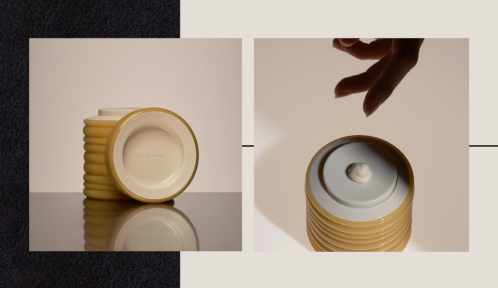From formulation to packaging, beauty products go through more processes than I can count before they land in your bathroom cabinet. And with each and every step, brands make decisions that render the products more or less sustainable.
Experts in This Article
beauty columnist for The New York Times and founder of the sustainable fragrance brand Ellis Brooklyn.
“We started making choices,” says Bee Shapiro, founder of fragrance brand Ellis Brooklyn. “You create the box and then you’re like, okay, well, do you want this regular stock or do you want this recycled responsibly ground paper stock?”
Shapiro, who is also a New York Times style section columnist, grew up in the Seattle area. After school activities often involved hikes in the nearby woods. “For me, nature was this very healing place,” she says. ” I can make this brand about me, [as a brand founder]. As I made these choices I was like, yes, I’m gonna pick the responsibly sourced forest paper. As we started making these choices along the way, our brand became sustainable.”
To figure out if your favorite brands are sustainable, Shapiro points to a few specific markers to be mindful of.
How to know if a beauty brand is *actually* sustainable
1. Find out how the brand sources its ingredients
For beauty products that use natural ingredients, the way they are grown can have a huge impact on the environment and the communities that farm them.
This Parisian Skincare Brand Is Launching in the United States for the First Time—Here’s What a Derm Wants You to Know

We’re Calling It: Cleansing Balms Are the Face Wash of the Future—Here Are 3 to Add to Your Cart

This Is the One Product That Scarlett Johansson Always Keeps in Her Purse and on Her Bedside Table

“Listen to how they describe the product and how their main ingredients are sourced,” says Shapiro. For Ellis Brooklyn, Shapiro pays close attention to how they source vanilla. “Vanilla is such a rare ingredient these days,” she says. “What we don’t want is a situation where we’re getting maybe a wonderful, gorgeous vanilla, but it’s getting sourced in an irresponsible way.”
2. Asses the packaging
“If you’re a conscious beauty brand, I think that once you start looking into the different options for paper stock, for example, you’re going to see that you have different options,” says Shapiro. “If I was a consumer, I would look for a company that actually has certifications of [their packaging materials]. Paper stock certified by the Forest Stewardship Council is a clear example, says Shapiro.
3. Make sure the brand is always working to move the sustainability goalpost
“That sustainable term is a moving goalpost,” says Shapiro. “It’s really tricky to be like, ‘Okay, my brand is 100 percent sustainable’—no! Because there’s always something more you could do. That’s something that’s become very important to us.”
For example, Shapiro aims to offset Ellis Brooklyn-related travel emissions by giving to the Carbon Fund. But, since they’re not traveling nearly as much during the pandemic, they’ve shifted their attention to make the packaging more sustainable.
“Everything changes all the time,” says Shapiro. “There might be a better paper stock tomorrow. There might be a better way of sourcing two weeks down the line. So that’s why I keep saying moving goalpost. This is like a goal that we’ve decided to orient ourselves around, but we’re continually trying to be better.”
Oh hi! You look like someone who loves free workouts, discounts for cult-fave wellness brands, and exclusive Well+Good content. Sign up for Well+, our online community of wellness insiders, and unlock your rewards instantly.
Sign Up for Our Daily Newsletter
Get all the latest in wellness, trends, food, fitness, beauty, and more delivered right to your inbox.
Got it, you've been added to our email list.








